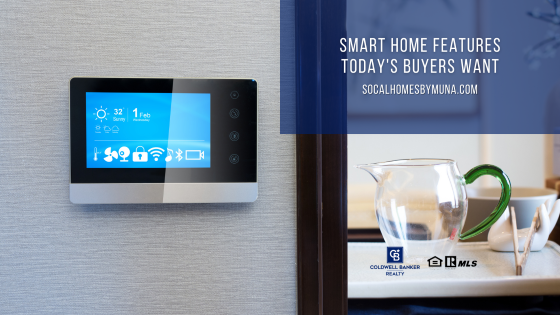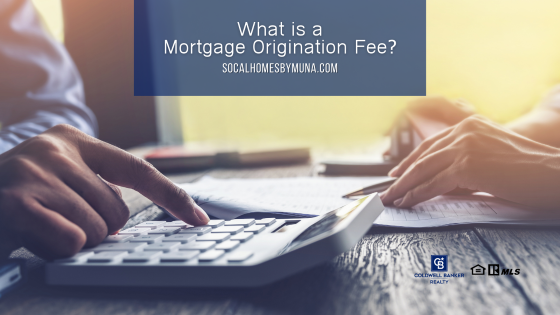For Sale by Owner Explained

DIY has become quite an industry in the last several years. TV shows like “Fixer Upper”, “Rehab Addict”, and “This Old House” make you feel like you can tackle just about any renovation project. And a simple search on YouTube brings up videos on everything from how to clean out your dryer vent to how to replace a toilet. Couple that with the rising cost of just about everything and it seems only natural that you might want to consider selling your home yourself. In fact, 10% of homes sold in the US in 2021 were sold by their owners, not licensed REALTORS®. But have you ever considered what actually goes into a “for sale by owner” transaction (commonly known as FSBO)? Let me break it down for you before you decide to DIY your home sale.
For Sale by Owner Explained
Pros of FSBO
First of all, when you sell your Southern California home yourself, you do not pay any commissions. The seller pays the commissions for a home sale. That can amount to 5% to 6% of the sale price. While half of that usually goes to the buyer’s agent, the seller’s agent receives thousands of dollars for their services as well. Another plus for FSBO is that you take total control over the sale, including how to market it, paying for photographers/videographers, when buyers see your property, fielding offers, and negotiating the final deal. That sounds like a lot of work, right? Well, that’s because it is. And that brings us to the “cons”.
Cons of FSBO
Like I said before it’s a lot of work to sell a home…even for seasoned real estate veterans. Also, FSBOs tend to take longer to sell than agent-represented properties. A licensed REALTOR® has access to the MLS. This allows your property to be seen by thousands of other agents across the country. More eyeballs on your property usually translate to more bodies through your door. More bodies through your door mean a higher likelihood of finding a buyer quicker. Real estate negotiations can be tricky when you lack experience in the field. Finally, how do you know where to set your list price? Ask for too little and you run the risk of losing out on some profits. Ask for too much and you may end up sitting on the market for much longer than necessary. A licensed agent knows the market and can help you run comps in the area to set a realistic listing price that will bring buyers to your door.
Carefully weigh the pros and cons of a “for sale by owner” scenario. There are several factors you need to consider before making a decision. If you decide to hire a professional, contact me. I’m always happy to help.
Muna Dionne, your Inland Empire specialist with Coldwell Banker Realty
What Home Buyers Want Most in 2023

Virtual staging company Stuccco.com researched what today’s home buyers wanted to see most of all when looking for a new property. Yes, buyers like smart-home features and updated kitchens. But you might be surprised by what tied for first place: a laundry room and exterior lighting. If you plan on selling your Inland Empire this year, it may help you to focus some of your pre-listing efforts on these two areas.
What Home Buyers Want Most in 2023
Laundry Room
I remember when we used to go to the garage to do our laundry. But that won’t work for today’s home buyers. And only enough space for the washer and dryer behind bi-fold doors is not enough. They want a dedicated laundry room inside the house. If your house already has one of these, great. You still might want to spruce it up a little to make it more attractive to potential buyers. Add a fresh coat of paint. Include shelves and/or cabinets for storage. Save space by installing a full-size stackable washer and dryer. (Score extra points by making them high-efficiency models.) Finally, add a place to fold and iron clothing.
Exterior Lighting
Of all the things you thought about when getting your house ready to sell, the exterior lighting may not have been one of them. But, it tied with the laundry room for what today’s home buyers look for most (at 87%). Replace old fixtures with newer ones. Install motion-sensor security lights above the garage and in the backyard. You might already have installed smart lightbulbs inside of your home. Don’t forget to do so outside. The Spruce identified Phillips Hue White Outdoor lights as their top choice for outdoor lighting. However, there are plenty of lights to choose from. Just make sure they are bright enough to illuminate the perimeter of your home. Landscape lighting also brings an added dimension of style. You can even find solar-powered ones for a more energy-efficient and cost-effective solution.
As always, when you are ready to list your home to sell, contact me. I’m always ready to answer any questions you may have.
Muna Dionne, your Inland Empire specialist with Coldwell Banker Realty
Outdoor Home Staging: What Not to Do

You want to sell your Southern California home. So, you perform the repairs and updates necessary to make it marketable. Another part of the home selling process includes staging. Why? Because studies show that 85% of staged homes sold for up to 23% of the list price. They also sold faster than unstaged ones. While some people set their focus on the inside, never forget about your outside home staging.
Outdoor Home Staging: What Not to Do
Don’t Ignore Your Exterior
First of all, get rid of dead plants. Pull the weeds. But do not leave empty pots laying around. Instead, fill them with flowers or greenery. Add some drought-tolerant plants, as well. Trim overgrown shrubbery and keep the lawn mowed to 1″ to 2″ tall. Also, store lawn care implements neatly in either the garage or an outdoor shed. Finally, place trash bins on the side of the house, behind your fencing.
Don’t Forget to Add Furniture
Here in Southern California, we enjoy great weather for most of the year. Buyers want to see the living space expand into outside areas. One outdoor home staging tip that entices buyers is to add outdoor furniture. Outdoor kitchens are very popular and will increase your home value. But they can get expensive. Even something simple like adding a small table with a few chairs and an umbrella shows potential buyers possible entertainment ideas. Add colorful placemats, a nice potted plant, and some outdoor tableware to complete the look.
Don’t Leave Clutter
I always tell my clients to declutter their Inland Empire homes before listing them. This makes rooms look larger and allows buyers to picture themselves (and their things) in the space. The same goes for outside home staging. Toys (both for kids and pets) need to be stored out of sight. Either repaint or remove rusted furniture. Replace stained furniture pads and pillows with newer ones.
Don’t Forget to Clean
Power wash your driveway and walkways. Scrub tabletops and counters. Trim back grass and shrubbery surrounding your walkways. You want buyers to easily find your front door and avoid tripping hazards to get there.
Don’t Ignore Exterior Paint and Driveway Maintenance
If buyers see peeling paint or a cracked driveway, they quickly worry about what else has not been taken care of in the home. Also, make sure your decking is in good condition. Make sure all of these fixes are finished before you take listing photos.
Muna Dionne, your Inland Empire specialist with Coldwell Banker Realty
What Home Sellers Should Consider When Reviewing an Offer

Selling a home can be nerve-wracking. One of the more stressful parts is waiting for an offer to come in. But even when you receive one, make sure you review it well before accepting. Here are a few of the things you need to look at before deciding whether or not to accept it.
What Home Sellers Should Consider When Reviewing an Offer
Offer Price
Everyone likes a deal. And our Inland Empire real estate market appears to be more balanced between buyer and seller. So, do not be discouraged if you see a lower-than-asking offer…especially if you priced it right to begin with. You can always counter back. What if they come in at asking? Well, meeting your asking price is great. However, there are other factors to think about as well.
Contingencies
The fewer contingencies, the better. It makes the whole process run a bit smoother with fewer conditions put into place. Some common contingencies buyers ask for include financing, selling their current home first, making sure the home appraises high enough, and a home inspection. If the buyer pays cash, they may waive the financing, appraisal, and home sale contingencies. Just make sure that they have enough funds in their bank account to cover the entire purchase before accepting an all-cash offer. If a buyer needs loan approval, an offer with pre-approval or pre-underwriting is much more sound than an offer with just a pre-qualification letter attached.
Financing Method
Speaking of financing, look at how they plan on getting financed. All-cash offers appear great at first. After all, they shorten up your closing timeframe. And if you need to sell your home quickly, that is definitely ideal. However, (again) make sure they have proof of funds first. Also, all-cash buyers tend to have the upper hand with negotiations. So, they may offer below asking and want a few extra perks thrown in as well.
If your buyer needs to procure a loan, see what method of funding they used. Request that the buyer include a pre-approval letter (at the very least) with their offer. This demonstrates that they have talked to a lender and the lender found them solid enough financially to pre-approve the funding for the home in question. Nevertheless, “pre-approval” is not the same as “final approval”. Sometimes, sales fall out of escrow even when a buyer receives pre-approval.
Earnest Money Deposit
An earnest money deposit (also known as a “good-faith deposit”) is the money a buyer puts down at the start of escrow. In the past, $1000 was considered normal. However, nowadays, it typically runs about 1-2% of the sale price. For a $500,000 home, sellers may expect to see $5,000 to $10,000 for just the EMD. This money goes towards the mortgage loan once escrow closes. A higher earnest money deposit shows just how serious the buyer feels about purchasing the property. The more they deposit, the more they potentially may lose. If the sale falls through, the seller could possibly end up with the EMD. That usually serves as plenty of motivation for a serious buyer.
Closing Timeline
Finally, sellers should consider the closing timeline spelled out in an offer. Have you already bought another home and want to be out of your financial obligation to your current home? A shorter timeline works better for you. But what if you need a bit more time to pack up years of memories and find a new place to live? Look for a longer timeline.
Always discuss any offer you receive with your Inland Empire REALTOR® before making a final decision. They know the local market. So, they have the kind of insight you need to make the most informed choice.
Muna Dionne, your Inland Empire specialist with Coldwell Banker Realty
Smart Home Features Today’s Buyers Want

For the past couple of years, sellers ruled the Inland Empire real estate market. While areas like Riverside, Redlands, Rancho Cucamonga, and Yorba Linda still favor the seller to varying degrees, most of the Inland Empire has seen a shift to a more balanced market. That means that sellers may need to make some changes to keep up. One area that has only gained in popularity over the years? Smart home technology. If you want to sell your home quickly, you might want to focus on incorporating these smart home features.
Smart Home Features Today’s Buyers Want
Smart Thermostats
One of the easiest, most cost-effective, and most popular features buyers like to see is a smart thermostat. Consumer Reports named models from Ecobee, Google Nest, and Honeywell as their top picks for smart thermostats. These devices learn your family’s regular habits and adjust to your heating and cooling needs automatically. They may also be controlled directly from your smartphone.
Smart Security System
Home security has come a long way. Many of these systems can be set up without any professional assistance whatsoever. Systems from Vivint, ADT, Simplisafe, and Ring rank high on PC Mag’s list. Several systems allow you to store video clips for a monthly fee as well.
Smart Lighting
Speaking of security, another one of the features becoming more and more popular is smart lighting. Again, you can control this system from your smartphone. This adds another level of security by making would-be thieves think that your home remains occupied even while you sun yourself on a beach somewhere far away. Add them to both the inside and outside of your home for extra security. CNET placed the Wyze bulb at the top of their list. Several other consumer websites agree that Wyze provides a good entry point into the smart lighting arena.
Smart Locks
Yet another one of the smart home features buyers look for are smart locks. They also work well with a doorbell camera for another added level of security. These come in keypads as well as biometric options. PC Mag rated the Ultraloq U-Bolt Pro as their top choice overall. But they also provide a breakdown for several others depending on your budget and personal taste.
These are just a few of the smart home features today’s buyer likes to see. So, if you want to sell your Inland Empire home faster, you might want to invest in at least a few of them.
Muna Dionne, your Inland Empire specialist with Coldwell Banker Realty


 Facebook
Facebook
 X
X
 Pinterest
Pinterest
 Copy Link
Copy Link




